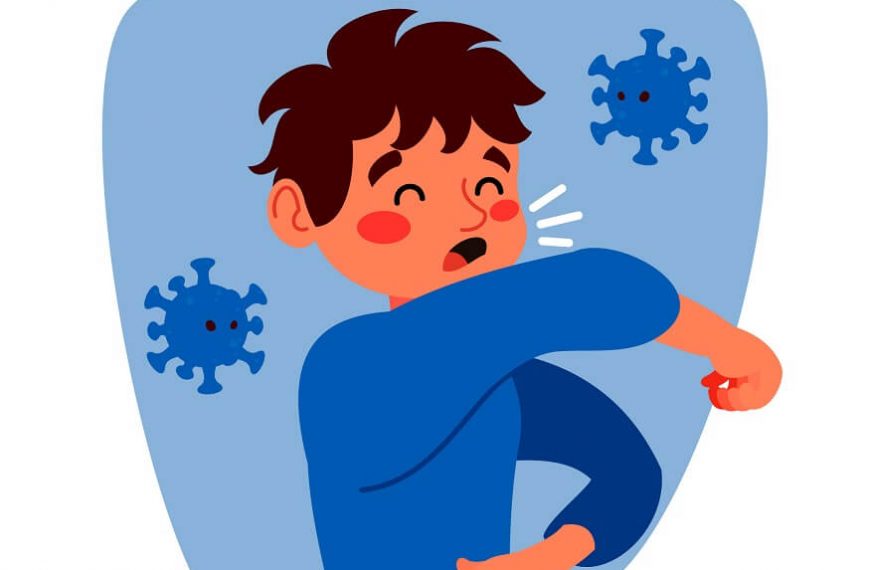Preventing Hand-Foot-and-Mouth Disease: Helpful Tips
Infants and young children under the age of five are most commonly affected by the widespread viral sickness known as hand-foot-and-mouth disease (HFMD). It can be uncomfortable and inconvenient for both kids and parents, despite the fact that it is normally a mild and self-limiting ailment. You can dramatically lower your chance of developing and disseminating HFMD by taking preventative actions. We will examine some practical advice to keep your family healthy and stop the spread of HFMD in this article.
Understand Hand-Foot-and-Mouth Disease
It’s critical to comprehend what Hand-Foot-and-Mouth Disease is and how it spreads before getting into prevention tactics. A variety of viruses, including the Coxsackievirus A16 and Enterovirus 71, are responsible for HFMD. It is extremely contagious and can be transmitted by coming into contact with an infected person’s bodily fluids, such as saliva, nasal mucus, blister fluid, or faeces. Fever, a sore throat, mouth sores, and a rash on the hands, feet, and buttocks are typical HFMD symptoms. Finding out what causes hand foot and mouth disease is hence vital.
Causes & Symptoms Hand-Foot-and-Mouth Disease
The Coxsackievirus A16 and the Enterovirus 71 are the main causes of HFMD. These viruses can spread by intimate human contact, respiratory droplets, and contact with infected surfaces and are very contagious. Even before symptoms manifest, infected people might spread the virus through their bodily fluids. You may protect your family by taking proactive steps to stop the spread of HFMD by being aware of its causes.
Understanding the signs of HFMD is essential for early detection and quick response. Fever, a sore throat, and a rash on the hands, feet, and buttocks are among the typical symptoms. In addition to oral sores, the rash may turn into blisters or ulcers. Children with HFMD may feel uncomfortable, agitated, and have trouble eating. By being aware of the symptoms, you can seek medical assistance and take precautions to lessen the likelihood of the disease spreading.
Stages of Hand-Foot-and-Mouth Disease
HFMD normally develops in stages, each of which is distinguished by a unique set of symptoms. Children may have a fever, sore throat, and a general sensation of malaise in the early stages. The emergence of oral lesions, such as uncomfortable mouth sores and blisters, marks the second stage. Finally, the hands, feet, and buttocks develop a rash. Knowing the phases of HFMD can help you spot the illness early and take the proper precautions to stop its spread.
How to Prevent Hand-Foot-and-Mouth Disease
- Practise Good Hygiene
- Keep Surfaces Clean and Disinfected
- Promote Respiratory Etiquette
- Maintain a Clean and Healthy Environment
- Practice Exclusion Policies
- Promote Healthy Habits
- Educate Yourself and Others
Maintaining proper cleanliness is one of the most efficient approaches to preventing HFMD. Regular handwashing with soap and water for at least 20 seconds should be encouraged, especially after using the lavatory, before meals, and after touching any possibly contaminated surfaces. Teach your kids how to wash their hands properly, including how to lather the soap well, clean in between the fingers, and fully rinse. Set an example for your family by including handwashing in their daily routine.
It’s critical to keep regularly touched surfaces clean and disinfected because HFMD can remain on surfaces for a long time. Toys, doorknobs, counters, and other surfaces that might come into contact with infected hands should be cleaned with water and mild detergent. Use a disinfectant that is efficient against viruses after cleaning. For proper use, make sure to read and adhere to the disinfection product’s directions. Pay close attention to locations with high traffic and items that kids touch a lot.
When an infected individual coughs or sneezes, respiratory droplets can potentially spread Hand, Foot, and Mouth Disease. Teach your kids to cover their mouth and nose when they cough or sneeze with an elbow or a tissue. Encourage routine handwashing after using tissues, and dispose of used tissues properly. You can reduce the possibility of the virus spreading through droplets in the air by encouraging respiratory etiquette.
The transmission of HFMD can be significantly slowed down by maintaining a clean and healthy environment. High-traffic areas like playrooms, schools, and nursery facilities should be cleaned and disinfected often. To lower the amount of viruses in the air, make sure these areas are well-ventilated. Encourage sick people, especially kids, to stay at home until they are completely well in order to stop the spread of illness.
Exclusion procedures must be in place in places like schools and daycare facilities to stop the spread of HFMD. A child should be kept out of the facility until they have fully recovered and are no longer contagious if they are identified as having HFMD or show symptoms. Work together with medical specialists to determine when it is safe for the child to return to the group environment, and heed their recommendations.
The severity and duration of HFMD can be decreased with a robust immune system. Promote healthy behaviours include eating a balanced diet, exercising frequently, and getting enough sleep. To strengthen the immune system, serve wholesome meals and snacks that are abundant in fruits, vegetables, and whole grains. Discover delicious and nutritious immune-boosting smoothies specially crafted for children to support their overall health and well-being. Encourage your child to drink plenty of fluids, especially water, to keep them hydrated. Not having healthy habits is what causes hand foot and mouth disease.
A major tool for stopping the spread of HFMD is knowledge. Keep up with the most recent details on HFMD, including symptoms, transmission, and mitigation tactics. Spread the word about this information to loved ones, close friends, and carers to increase awareness and encourage a preventative strategy for HFMD. You can help create a healthier neighbourhood by educating both yourself and others.
A combination of proper hygiene practices, upholding a clean atmosphere, fostering healthy habits, and raising awareness can help prevent Hand, Foot, and Mouth Disease. By using the advice provided in this article, you can lessen your chance of developing HFMD and safeguard your family’s health. To ward against HFMD, stay aware, be on the lookout, and take preventative actions.
Consider EuroKids if you’re seeking for a secure and supportive atmosphere for your child’s early education. EuroKids offers a selection of top-notch early childhood programs with an emphasis on holistic development and a child-centric approach. Visit our website to find out more about our centres and the EuroKids advantage for the future success of your kid.












